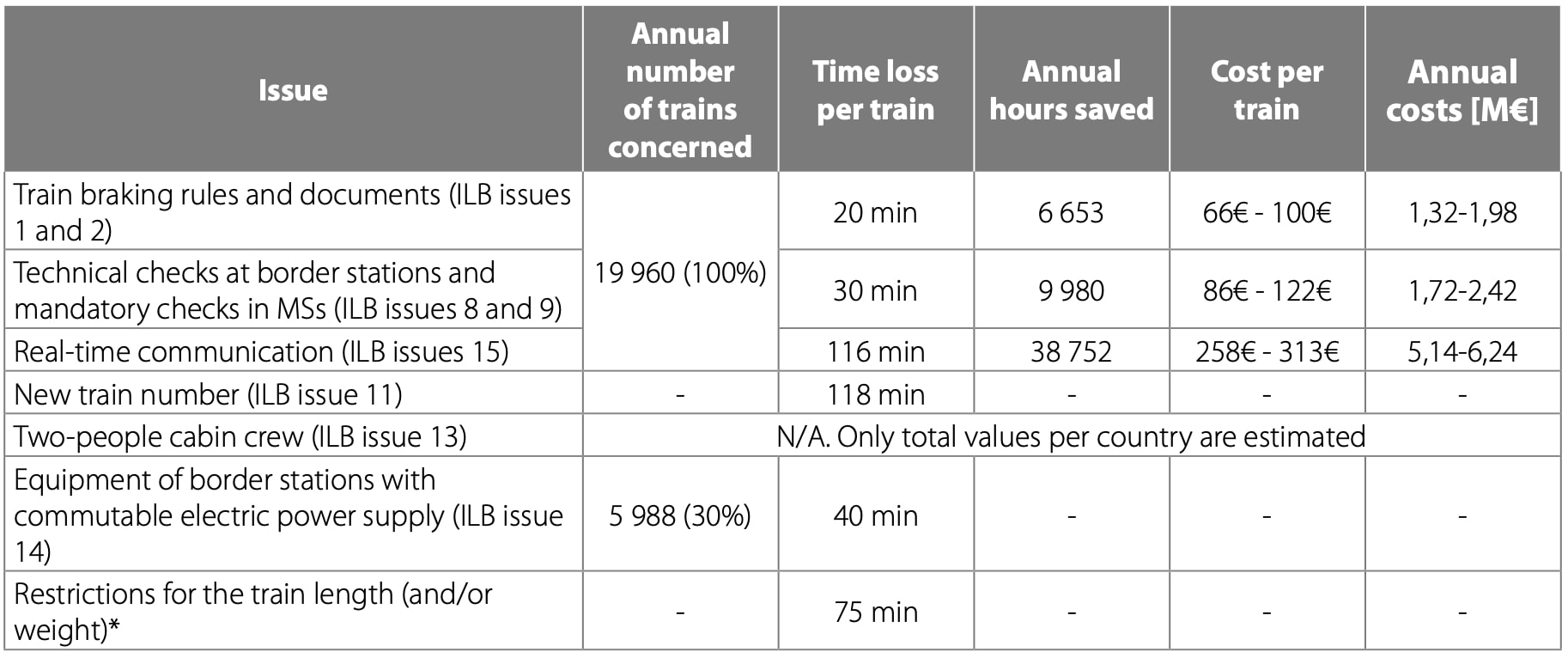ERA finds substantial administrative obstacles on internal EU borders 12/12/22
< Zurück
The European Union Agency for Railways (ERA) presented a study identifying various barriers in border-crossing rail transportation that cause significant losses of time. When it comes to rail freight, the biggest delays are caused by technical checks, inefficient real-time communication, and assigning a new train number.
The study was carried out analysing two rail freight routes crossing borders in Europe and was presented in Brussels today, Monday 13 December. The study assessed the border between Giurgiu Nord, in Romania, to Ruse Razpredel, in Bulgaria, and from Brennero, in Italy, to Staatsgrenze nächst Steinach in Tirol, in Austria.
ERA is proposing the “further reduction of the national rules, and further adaptation of the Technical Specifications for Interoperability (TSIs)”. TSIs define the technical and operational standards which must be met to meet the essential requirements and ensure the interoperability of the railway system of the EU.
ERA already published the Acceptable Means of Compliance earlier in 2022 and states that possible solutions for the issues of technical checks are already in the implementation phase. However, it needs to be mentioned that the study, by its own admission, does not take into account “the possible spill over effects emerging from more measures adopted simultaneously”.
Fixing these issues would save almost five hours of waiting time
The Agency’s report underlined that Rail Undertakings (RUs) “are required to switch braking regimes at border crossings even if the train composition does not change”. This procedure leads to losses in time for roughly 20 minutes per train. Moreover, technical checks at border stations, which can happen on both sides of the border, add 30 minutes to the waiting time.
 Image: ERA
Image: ERA
More significant delays are caused, according to the ERA’s report, by issues regarding real-time communication. The Agency is urging for smoother ETAs transmission and active traffic management from the second Infrastructure Manager. These two solutions would save around 116 minutes per train.
Finally, the issue that causes the longest waiting time is the practice of assigning a new train number every time a train crosses the border, even if the train composition does not change. The ERA study claims that this process takes an average of 118 minutes per train. This is because, when assigned a new number, the train is considered as a new one, and all train preparation procedures, as the report explained.





